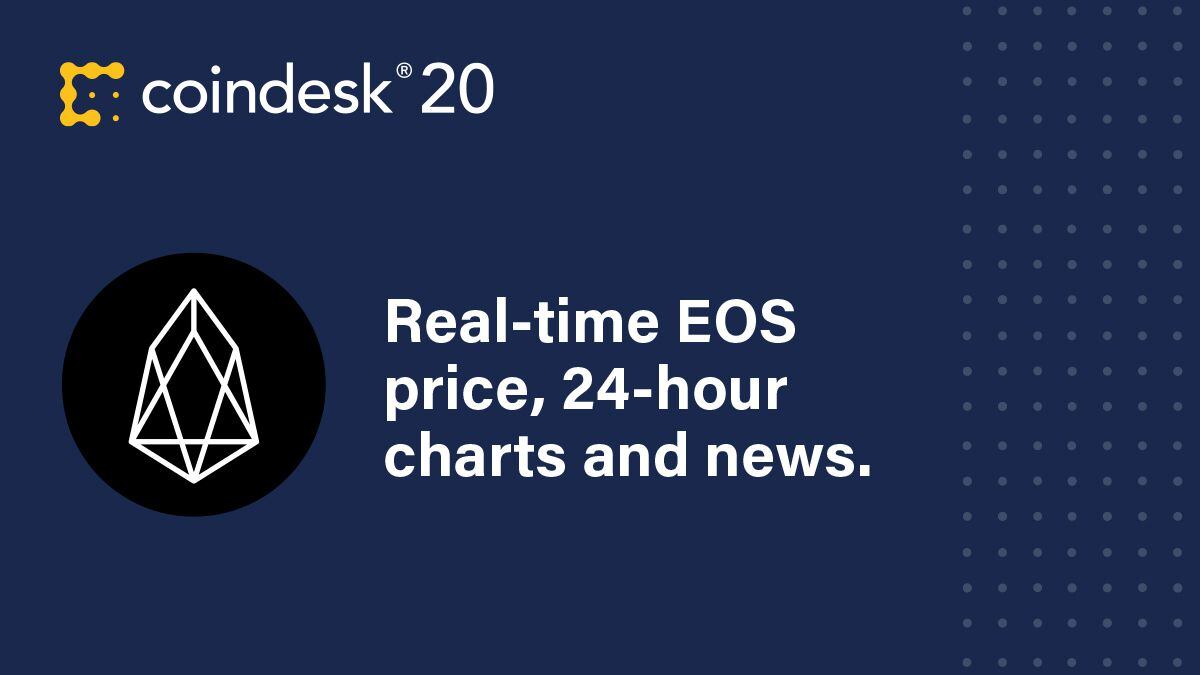EOS is the native cryptocurrency of the EOS platform, which supports the
EOSIO blockchain platform.
EOS was announced in 2017 by blockchain incubation and investment firm
Block.one and was released as an
open-source software in June 2018. As outlined in the EOS
white paper, the project was created to build
decentralized applications (dapps) with a focus on efficiency and scalability.
EOS price
EOS holds the record for the largest initial coin offering (ICO) to date. Starting in June 2017,
Block.one held a yearlong ICO for EOS, raising a record 7.12 million ETH, the native token of the Ethereum blockchain, valued at $4.2 billion at the time. The token sale featured 350 distribution periods of at least 2 million tokens a day,
totaling 900 million tokens by the end of the ICO. Ninety percent of the total EOS tokens were distributed to ICO participants, while the remaining 10% were reserved for the EOS team.
Because the EOS blockchain was still under development at the time of the ICO,
Block.one issued EOS tokens on the Ethereum blockchain using the
ERC-20 standard. On June 2, 2018, ERC-20 based EOS tokens were
frozen, and they were replaced with native EOS tokens on the EOS blockchain via a token swap that took place on June 16.
EOS is an inflationary asset with an uncapped supply. The blockchain’s delegated proof-of-stake (DPoS) model generates EOS through staking rewards in order to fund transactions and pay block users. The DPoS mechanism has an inflation cap set at 5% of annual inflation.
EOS price has a long history of prolonged periods of sideways activity intersected with brief price increases and decreases.
Two days after it was launched, EOS’ price surged 996% to $5.50 before sharply falling 79% over the following 13 days. From there, the asset remained range-bound at between $0.45 and $2.0 for about four months until the late 2017 crypto bull run started to take effect. By Jan.18, 2018, EOS price peaked at $18.69 before crashing to $4 by the end of March.
A second resurgence in April 2018 pushed EOS’s price to its all-time high of $22.89. By the end of 2018, the crypto asset had experienced a significant wave of selling as investors lost confidence in the project, leaving EOS down at $2.59. Over the next two years, EOS; price rarely peaked above $5, except for a brief spike to $8.60 in May 2019.
In April 2021, EOS broke above $14.71 as a new bullish cycle took over the crypto market. That was the highest price in almost three years.
How does EOS work?
EOS is a public blockchain that powers the EOSIO blockchain platform. The EOS blockchain has
smart contract capabilities similar to Ethereum that enable developers to create their own dapps on the EOSIO platform. Dapps are applications that operate autonomously and aren’t managed by any single company. Unlike Ethereum, however, EOS confirms transactions using the DPoS consensus algorithm.
DPoS consensus was introduced in 2014 by Dan Larimer, who was one of
Block.one’s co-founders and a former chief technology officer of the firm. Under DPoS, EOS users can vote by staking tokens with block producers for three days without selling them, putting them at risk of losing money should the price of the token drop during that time. Block producers are elected by the EOS ecosystem through this token staking/voting system. Today, dPoS has become a popular consensus algorithm that is being used by other blockchains, including Avalanche (AVAX), Near (NEAR), Solana (SOL) and Polkadot (DOT).
The EOSIO platform is more scalable than many other blockchain networks, with the ability to process around
4,000 transactions per second with no fees. Additionally, the smart contract functionalities built into EOS are more developer friendly, letting dapp developers get some technology resources directly from the blockchain. EOS doesn’t require mining fees and thus, has no associated transaction fees.
Key events and management
Larimer has led the project, playing a key role in important decisions including the use of the DPoS consensus algorithm. In addition to his work on the EOS blockchain, Larimer is a co-founder of crypto exchange BitShares alongside Charles Hoskinson, who was one of Ethereum’s co-founders. Larimer also founded the Steem blockchain. He continued to work with
Block.one on the EOS project until he stepped down from his position as CTO at the end of 2020, to pursue other projects.
In August 2021, Larimer backed the launch of the EOS Foundation, which centralizes other EOS community efforts like Eden to promote the development of EOS infrastructure and provide grants for developers. The EOS Foundation is led by Yves La Rose, who
spearheaded the foundation following his departure from the EOS block production firm EOS Nation.
In November 2021, Rose stated at a virtual event that “EOS as it stands is a failure” and that the EOS token was a “terrible investment.” He was highly critical of
Block.one’s involvement in the project and said that many people inside and outside of the EOS community believed that
Block.one knowingly misrepresented its capabilities and that the project could “no longer rely on” the
Block.one team.



Leave a Reply